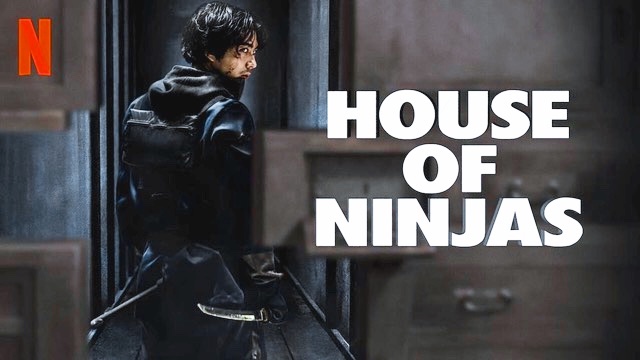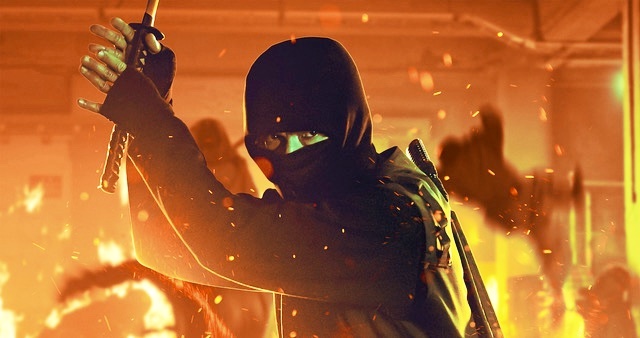Filmmaker Dave Boyle learned Japanese for his LDS mission.
By Gil Asakawa, P.C. Contributor
Ninja have always been popular fodder for action movies in Japan, though usually in the historical context of samurai-era stories. Now, a new Netflix series, “House of Ninjas,” has brought ninjas to modern times, and since its Feb. 15 debut has been ranked No. 1 in 16 countries and regions around the world, reached the Top 10 list in 92 countries and currently sits atop the global list of non-English TV shows on the streaming service.

The new Netflix series “House of Ninjas” brings shinobi to modern-day Japan. (Photo: Courtesy of Netflix)
“House of Ninjas” is an eight-episode action drama about a clan of ninja, or shinobi, that fought evil until a tragedy caused the family to retire to live a menial existence. But the government’s secret “Bureau of Ninja Affairs” convinces the Tawara family to get back in the battle against a mysterious foe that turns out to be a rival shinobi clan from the ancient past.
The series was filmed in Japan, with Japanese actors and a Japanese script, though it’s dubbed and subtitled into various languages including English. In Japan, it’s called “Shinobi no Ie,” or “House of Shinobi,” the preferred term by many Japanese instead of “ninja” that’s more familiar to us in the West.
It was filmed on location, including at the famed Toho Studios in Tokyo. But not everyone involved in the series is Japanese. The series’ showrunner is Dave Boyle, a 42-year-old white guy from Utah.
But Boyle is no stranger to Japan, or even Japanese American and Asian American themes in films. As a director, writer and producer, his credits include titles such as “Big Dreams Little Tokyo” (2006), a partially autobiographical comedy starring himself, about an American who wants to work in Japanese business; a family comedy “White on Rice” (2009) about a Japanese salaryman who comes to the U.S. after a divorce; three films starring JA singer-songwriter Goh Nakamura, “Surrogate Valentine” (2011), “Daylight Savings “(2012) and “I Will Make You Mine” (2020); as well as a well-received noir mystery about a Japanese author who comes to the U.S. and become caught up in a murder.
All this cross-pollination with Japan has been a natural arc of Boyle’s career.

“House of Ninjas” is an eight-episode action-drama from showrunner Dave Boyle. (Photo: Courtesy of Netflix)
“It started with a little bit of a coincidence,” Boyle said. “I come from a Mormon family, and you know, Mormon folks when you turn 18, you get sent on a mission. You don’t choose where you go or anything, and I was sent to Sydney, Australia, on a Japanese-speaking mission. So, I was assigned to learn to speak Japanese, and then I found that I really, really enjoyed studying the language and learning about Japanese culture.”
The experience changed his life.
“When I came back and returned to ordinary life and started working on my film career, my first tiny, scrappy, little indie film that I made with my friends, called ‘Big Dreams Little Tokyo’ was very directly about that experience, sort of about the experience of trying to learn a foreign language or fit into another culture.”
He has certainly accomplished that with “House of Ninjas.” When Netflix was approached by Japanese actor Kento Kaku, whose career in movies and television began in 2007, the year after “Big Dreams Little Tokyo,” with an idea for a new series about a modern-day family of ninja, Netflix reached out to Boyle.
He initially signed on to flesh out Kaku’s ideas and place them into a narrative. “The first thing I did was write what they call a show bible that lays out the world of the show, the characters, and it’s sort of a guidepost of what the show is,” Boyle explained. “Kento was totally onboard, really happy with what I had done. Originally, that was going to be the limit of my involvement. And then more and more, my responsibility grew.”
Before long, Boyle wrote the script for the pilot and supervised the writing for the rest of the series, as well as directed the first three episodes and the season finale, while two other directors handled the other episodes. “And so, there was definitely a team effort.”
Still, he noted, “I was the primary decision maker.” As the show’s “head honcho” (a term lifted by American GIs after World War II from the Japanese hanchō or “team leader”), Boyle was in Japan for 18 months working on the series.
“Oh, it was just incredible,” he said. “I would ride my bike every day to the studio past the statue of Godzilla, past the mural of the Seven Samurai, and park my bike and go into work.” The environment inspired his vision for the “House of Ninjas,” working with Kaku and his Japanese colleagues.
The show is appealing on many levels, including the action of the fight scenes, which will satisfy even the blood-thirstiest “John Wick” blood-and-guts fans, but also its moody, dark scenes and carefully manipulated cinematic atmosphere.
Not much of the film shows Japan in broad daylight, though there are striking shots of Mount Fuji as the backdrop for a bright landscape and cool shots of Odawara Castle, where the Tawara family lives south of Tokyo. Boyle acknowledges that the overall tone of the series was a priority for himself and Kaku, with a lot of attention paid to the lighting and color palette.
Even the music, which Boyle chose, was an important element for its tone. Over the opening scene, a gentle cover of the classic folk-rock song “Our House” by Crosby, Stills and Nash from 1969 accompanies the frenzied fight scene between the Tawara family and evil ninja amidst a nighttime maze of shipping containers. He also chose Carla Thomas’ pining soul song “Gee Whiz” and four songs by the British invasion ’60s band the Zombies.
“There’s something about the Zombies and especially in (the song) ‘Our House’ that I felt like was really the right tone for the show,” he said. The music is “expressing sort of a longing and a sadness, but the songs themselves are really fun. We’re trying to make a fun, fast-paced show, but also there is a little bit of a core of sadness at the center of it.”
The music is an important element of Boyles and his collaborators’ attention to detail in crafting the world of this modern shinobi family. All of the details wrapped together make for a supremely entertaining thrill ride that has a heartwarming family drama at its center.
In the wake of the streaming service having canceled another Asian-themed series after one season (“The Brothers Sun”), Netflix will hopefully greenlight a second season “House of Ninjas” quickly, so that the cast and crew won’t lose any of their ninja momentum.
This article was made possible by the Harry K. Honda Memorial Journalism Fund, which was established by JACL Redress Strategist Grant Ujifusa.



